
Beauty and the Beast is a fairy tale written by French novelist Gabrielle-Suzanne Barbot de Villeneuve and published in 1740 in La Jeune Américaine et les contes marins. Her lengthy version was abridged, rewritten, and published by French novelist Jeanne-Marie Leprince de Beaumont in 1756 in Magasin des enfants to produce the version most commonly retold. Later, Andrew Lang retold the story in Blue Fairy Book, a part of the Fairy Book series, in 1889. The fairy tale was influenced by Ancient Greek stories such as "Cupid and Psyche" from The Golden Ass, written by Lucius Apuleius Madaurensis in the second century AD, and The Pig King, an Italian fairytale published by Giovanni Francesco Straparola in The Facetious Nights of Straparola around 1550.

"Little Red Riding Hood" is a European fairy tale about a young girl and a sly wolf. Its origins can be traced back to several pre-17th century European folk tales. The two best known versions were written by Charles Perrault and the Brothers Grimm.
Anita Blake is the title and viewpoint character of the Anita Blake: Vampire Hunter series by Laurell K. Hamilton. The series takes place in a parallel world in which supernatural characters like vampires and werewolves exist alongside regular humans, with Blake's jobs including the re-animation of the dead as well as the hunting and executing of supernatural creatures that have broken the law. Hamilton stated that she created the character after perceiving a gender inequality in detective fiction, with female characters rarely getting the same treatment as male heroes of the genre.
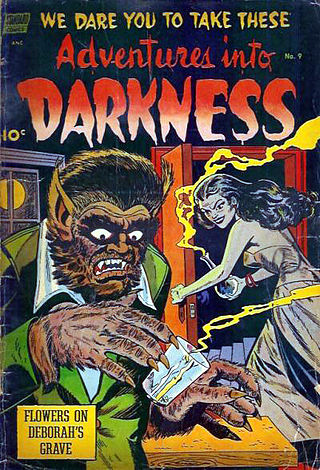
Werewolf fiction denotes the portrayal of werewolves and other shapeshifting therianthropes, in the media of literature, drama, film, games and music. Werewolf literature includes folklore, legend, saga, fairy tales, Gothic and horror fiction, fantasy fiction and poetry. Such stories may be supernatural, symbolic or allegorical. A classic American cinematic example of the theme is The Wolf Man (1941) which in later films joins with the Frankenstein Monster and Count Dracula as one of the three famous icons of modern day horror. However, werewolf fiction is an exceptionally diverse genre, with ancient folkloric roots and manifold modern re-interpretations.

Philippine "Pina" Bausch was a German dancer and choreographer who was a significant contributor to a neo-expressionist dance tradition now known as Tanztheater. Bausch's approach was noted for a stylized blend of dance movement, prominent sound design, and involved stage sets, as well as for engaging the dancers under her to help in the development of a piece, and her work had an influence on modern dance from the 1970s forward. Her work, regarded as a continuation of the European and American expressionist movements, incorporated many expressly dramatic elements and often explored themes connected to trauma, particularly trauma arising out of relationships. She created the company Tanztheater Wuppertal Pina Bausch, which performs internationally.

The Son's Room is a 2001 Italian film directed, written and produced by Nanni Moretti. It depicts the psychological effects on a family and their life after the death of their son. It was filmed in and around the city of Ancona, with a cast led by Moretti, Laura Morante and Jasmine Trinca.
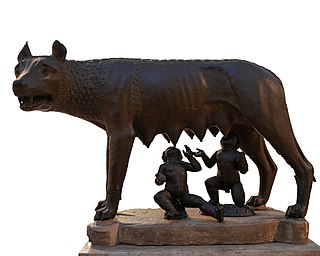
The Capitoline Wolf is a bronze sculpture depicting a scene from the legend of the founding of Rome. The sculpture shows a she-wolf suckling the mythical twin founders of Rome, Romulus and Remus. According to the legend, when King Numitor, grandfather of the twins, was overthrown by his brother Amulius in Alba Longa, the usurper ordered them to be cast into the Tiber River. They were rescued by a she-wolf that cared for them until a herdsman, Faustulus, found and raised them.

Werewolf Woman is a 1976 Italian horror film directed by Rino Di Silvestro.

Leonor Teles was queen consort of Portugal by marriage to King Ferdinand I, and regent of Portugal during the minority of her daughter in 1383-1384. She was one of the protagonists, along with her brothers and her daughter Beatrice, of the events that led to the succession crisis of 1383–1385, which culminated in the defeat of her son-in-law King John I of Castile and his armies in the Battle of Aljubarrota. Called "the Treacherous" by her subjects, who execrated her on account of her adultery and treason to her native country, she was dubbed by the historian Alexandre Herculano as "the Portuguese Lucrezia Borgia".

L'infedeltà delusa, Hob. 28/5, is an operatic burletta per musica in two acts by Joseph Haydn. The Italian libretto was by Marco Coltellini.
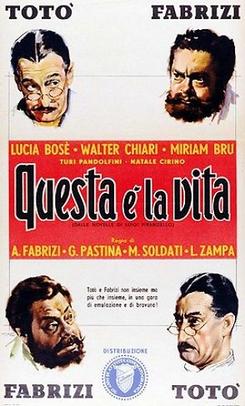
Of Life and Love is a 1954 Italian comedy film directed by Aldo Fabrizi, Giorgio Pastina, Mario Soldati and Luigi Zampa.

Bottoms Up is a 1934 American pre-Code musical comedy film made by Fox Film Corporation, and was directed by David Butler who co-wrote original story and screenplay with producer Buddy G. DeSylva and co-star Sid Silvers. The picture stars Spencer Tracy, Pat Paterson, John Boles and Herbert Mundin, and features Thelma Todd in a supporting role.
A she-wolf is a female gray wolf.
La lupa is Italian for "the she-wolf", a female wolf.

Una familia con suerte is a Mexican telenovela produced by Juan Osorio for Televisa in 2011. It is based on the Argentinean telenovela Los Roldán. Arath De La Torre, Mayrín Villanueva and Luz Elena González star as the main protagonists. while Sergio Sendel, Daniela Castro, Cecilia Galliano, María Rubio, Enrique Rocha and Patricia Reyes Spíndola stars as the main antagonists. Una familia con suerte won 4 awards in Premios TVyNovelas: Best young lead actor, best male & female revelation, and best musical theme.
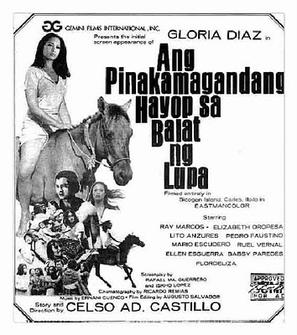
Ang Pinakamagandang Hayop sa Balat ng Lupa is a 1974 Tagalog-language film from the Philippines. The story was written by Celso Ad. Castillo. The screenplay was written by Rafael Ma. Guerrero. The film starred Filipino actors Gloria Diaz, Vic Vargas, and Elizabeth Oropesa. The film was produced by Gemini Films International and was shot in Sicogon Island of Carles, Iloilo in the Western Visayas region of the Philippines.

La lupa is a 1953 Italian drama film directed by Alberto Lattuada.

La lupa is a 1996 Italian drama film directed by Gabriele Lavia. It is based on the novella with the same name by Giovanni Verga.
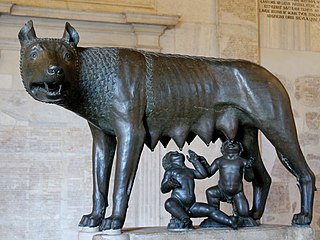
In the Roman foundation myth, it was a she-wolf that nursed and sheltered the twins Romulus and Remus after they were abandoned in the wild by order of King Amulius of Alba Longa. She cared for the infants at her den, a cave known as the Lupercal, until they were discovered by a shepherd, Faustulus. Romulus would later become the founder and first king of Rome. The image of the she-wolf suckling the twins has been a symbol of Rome since ancient times and is one of the most recognizable icons of ancient mythology.

Revolting Rhymes is a 2016 British-South African computer animated television film based on the 1982 book of the same name written by Roald Dahl and illustrated by Quentin Blake.

















